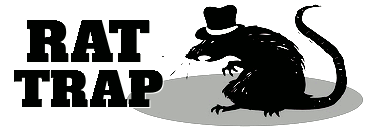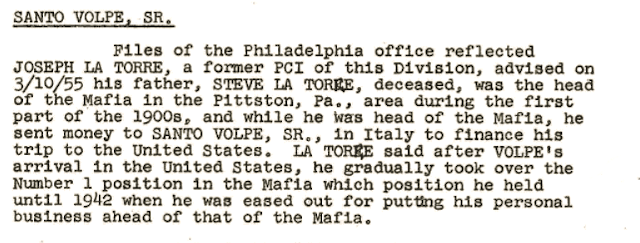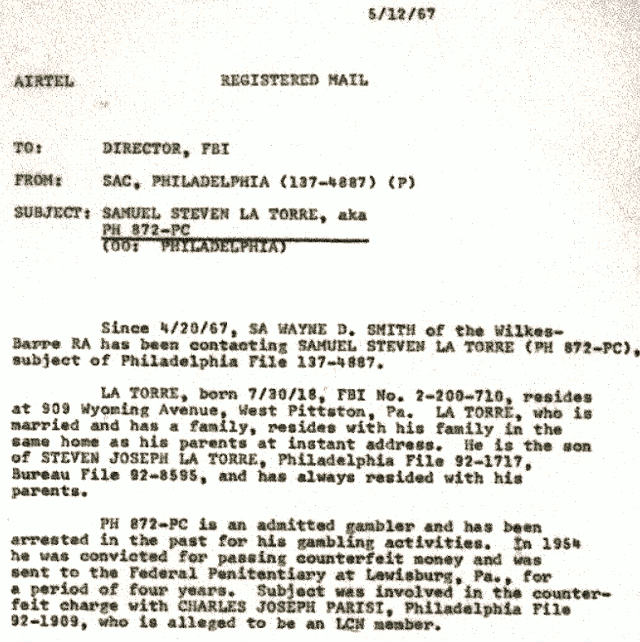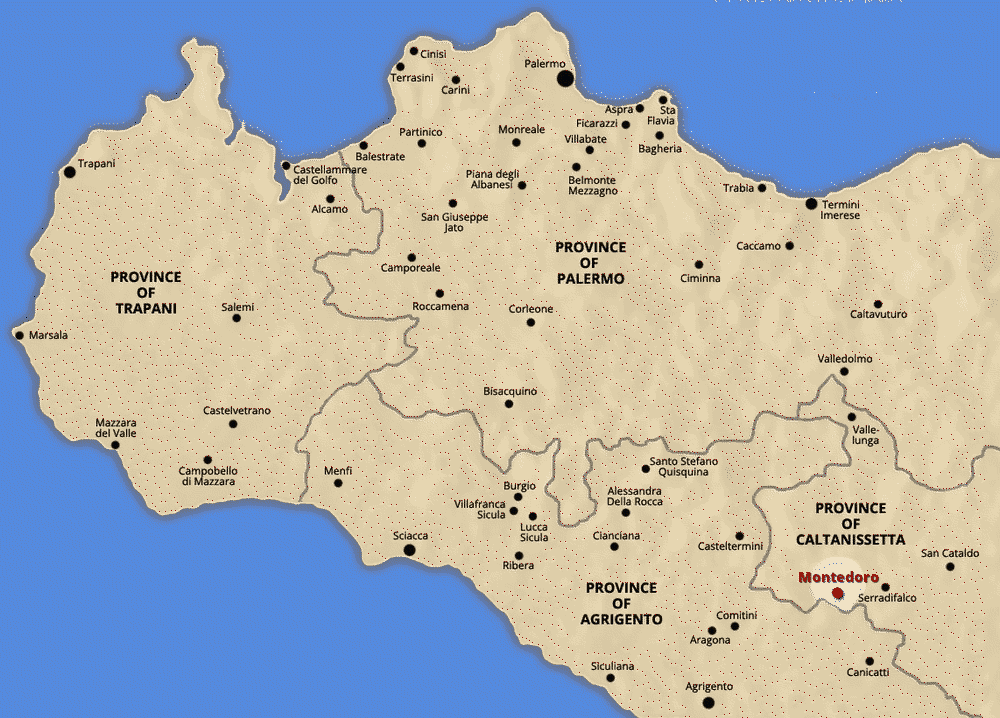Pittston is a small city in northeastern Pennsylvania's anthracite coal-mining region. Pittston's population grew dramatically in the 19th century, when an expanding coal industry drew in primarily Eastern European and Italian immigrants looking for work. The region also became a thriving center of the clothing manufacturing industry.
One of the larger immigrant groups in Pittston were Sicilians from the municipality of Montedoro. Translated as "mountain of gold," Montedoro was an old sulfur mining town. Over the centuries, locals had developed an expertise in mining, which made Pittston a natural destination for those relocating to the United States.
Among those who migrated were Steven LaTorre, Santo Volpe and Charles Bufalino. Known as the "Men from Montedoro," they were the founders of what became known as the Pittston Crime Family (or Bufalino Crime Family). [1]
LaTorre brothers
In 1951, thirty-eight-year-old Joseph LaTorre began to share with the authorities confidential information about a criminal group called the "Organization." Joseph was the eldest son of former Pittston Crime Family boss Steven LaTorre. Before the Apalachin meeting and Joe Valachi's revelations put the Mafia on the front page, Joseph was giving federal investigators Intel about its members and criminal activity. The FBI assigned him informant symbol code "PH-521." He would communicate on and off with the Federal Bureau of Investigation until at least the late 1960s. [2]
But Joseph wasn't the only member of his family to talk. In 1967, his younger brother, Samuel LaTorre, also became an informer. The FBI assigned him informant symbol code "PH-872."
Neither brother was a La Cosa Nostra member. [3] They didn't take a blood oath to keep mob secrets. They were semi-legitimate guys, confessed "gamblers" with criminal records. For the most part, their knowledge of LCN came secondhand from their father. Their value lay mostly in retelling their father's criminal past. But at a time when the Pittston Crime Family had no member-informants, the brothers were the nearest thing to inside sources.
Joseph LaTorre (1913-2001)
Joseph was born in Pittston on July 24, 1913. [4] He and his father Steven operated the LaTorre Smoke Shop. The business opened in 1941 and was located at 19 South Main Street in downtown Pittston. In 1945, Joseph purchased a three-story building across the street and opened a pool hall called LaTorre's Recreation. [5] The businesses thrived in the postwar economy. [6] Joseph operated LaTorre's Recreation for fifty years. He was very active in the community and sponsored bowling leagues, softball games, and billiard tournaments.
LaTorre's Recreation was a bettor's haven. It had a ticker tape and a big scoreboard to keep track of out-of-town sporting events. Pittston was generally an "open town," and authorities tolerated gambling up to a point. Nonetheless, Joseph was arrested for gambling at least six times over the decades. [7] [8] He died of natural causes on April 28, 2001.
Samuel LaTorre (1918-1989)
Pittston-native Samuel LaTorre was born on July 30, 1918. He graduated from Wyoming Seminary, a private high school, and was a state wrestling champion. He attended college and served in the Navy during World War II. [9] After the war, Samuel operated a restaurant for a time. He claimed credit for introducing the "hoagie" or submarine sandwich to Pittston.
In December 1952, Samuel was convicted of robbing a drug store in Syracuse, New York, and sentenced to ten years on probation. [10] A number of factors helped him avoid prison for the offense: his reportedly minor role in the crime, his clean record to that point and letters of support from "judges, policemen and bankers" attesting to his excellent character.
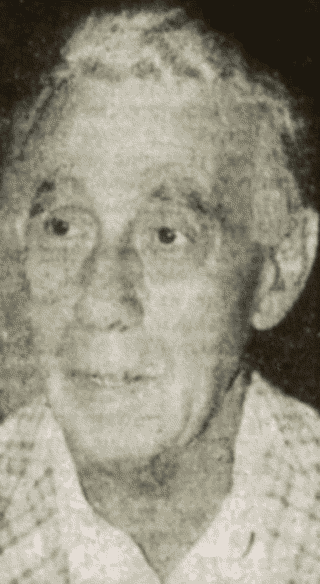
Samuel LaTorre
In 1954, police arrested Samuel for possessing and selling $3,000 worth of counterfeit ten-dollar bills. He bought them from Charles Parise, a suspected LCN member from Ohio. Samuel passed some of the bogus bills in crap games and sold the rest to an undercover secret service agent. [11] Samuel faced a maximum fifteen-year prison term if convicted.
The legal proceedings turned into a fiasco. A reporter covering Samuel's trial called it the "most unusual series of legal and medical maneuvers ever witnessed in these parts." [12] On the eve of the trial, Samuel crashed his car into a pole and required hospitalization for ten days. [13] His doctors claimed he sustained severe injuries in the accident and requested the trial be delayed. However, three doctors appointed by the court examined Samuel and determined he was fit to proceed.
At his next court appearance, Samuel arrived at the court building in an ambulance straight from his hospital bed. He attempted to enter the courtroom on a stretcher carried by two attendants, but the judge refused to let him in. The assistant district attorney Stephen Teller was furious. [14]
"Get off the litter," Teller said. "Get up. You have a better pulse than I have."
The resulting chaos delayed the trial further. Samuel eventually pleaded guilty to the charges, and he was sentenced to a four-year term in the federal penitentiary at Lewisburg, Pennsylvania. [15]
Some helpful legal advice
Samuel LaTorre and an associate, Charles Parise, were arrested on counterfeiting charges in 1954. Before trial, LaTorre attended a meeting in the law offices of Pittsburgh attorney Charles Margiotti. Margiotti was the former attorney general of Pennsylvania and a well-known political fixer. In attendance were Samuel's bother Joseph, co-defendant Parisi and Pittsburgh LCN members Kelly Mannarino and Charles Barchia. [70] Margiotti may have advised LaTorre to act out in court in an attempt to game the legal system.
In April 1967, Samuel LaTorre, age forty-nine, started to share confidential information about the Pittston Crime Family and its membership. The available FBI files don't provide a reason why he began to talk, and the timing of his cooperation doesn't overlap with any known arrest. There is no evidence from the available FBI reports that either brother was aware the other brother was talking.
Samuel advised that his information was trustworthy because it came directly from his knowledgeable father. Samuel and his family lived in his father's house. According to Samuel, he was his father's "favorite son," and his father wanted to "enlighten him on the Organization's membership and activities." His father took him into his confidence, he said, "for his own personal protection." Steven LaTorre seems to have advised his sons to avoid the organization at all costs. The brothers' motivation to talk may have emerged from the way the crime family treated their father.
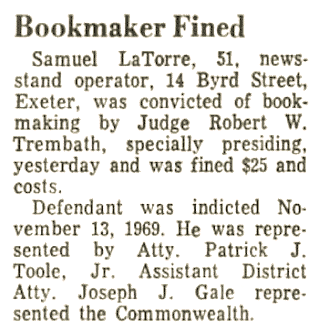
Bookmaking conviction
Samuel was an enthusiastic informer. He told the FBI that, if there was any question he couldn't answer himself, he would take it to his father. According to Samuel, his father had "never refused to answer [his] questions concerning the Organization."
Samuel's first confidential interaction with the FBI occurred on April 20, 1967, when he tipped off federal agents about a stolen load of cigarettes. Samuel Ruggere and three associates hijacked a trailer from a freight terminal in Kingston, Pennsylvania, a borough across the Susquehanna River from Wilkes-Barre. The trailer contained 800 cases of Pall Mall and Lucky Strike cigarettes. The thieves were able to unload some of the stolen cargo before they were arrested by police. Some of the cigarettes were tracked down in Brooklyn. Samuel's tip led to the "recovery of stolen property valued at approximately $44,000." FBI noted in its report that he provided "reliable and valued information."
Like his brother, Samuel LaTorre was repeatedly arrested on gambling charges, but he always escaped with only a fine. [16] [17] It's likely no coincidence that the brothers, despite many convictions, never saw the inside of a prison again after they began cooperating with federal law enforcement. Samuel LaTorre died on January 4, 1989.
LaTorre brothers spill
Steven LaTorre was born March 11, 1886, in Montedoro, Sicily. In 1903, at the age of seventeen, he settled in Pittston. He joined his father, Giuseppe, who had relocated earlier. According to Joseph LaTorre, his father Steven started as a coal miner.
In 1906, Steven LaTorre fulfilled a promise and sent money for his Montedoro friends Santo Volpe and Charles Bufalino to join him across the Atlantic. LaTorre supported Volpe and Bufalino financially after they first moved to Pittston. They later became business partners in the coal mining industry. LaTorre admitted to his sons that he was a member of the Mafia. [18] LaTorre, Volpe, and Bufalino were likely made Mafia members in Pittston. Charles Bufalino was the uncle of later crime boss Rosario "Russell" Bufalino.
Joseph told the FBI that Italian organized crime existed in the Pittston-area before his father arrived. For many years, "Black handers" extorted Italians with threatening letters, but Steven LaTorre and his associates were likely responsible for establishing the separate organization that later became the Pittston Crime Family or the Bufalino Crime Family. The organization's power would peak in the 1960s under Russell Bufalino.
Pittston was a magnet for immigrants from Montedoro. According to Joseph, the "Organization" - the term he used to refer to the crime group - provided new arrivals with assistance to help them prosper in their new surroundings. A large percentage of Pittston Crime Family members were born in Montedoro. Over the years, the organization "gained power and became involved in criminal activities, such as bootlegging." In the old days, Joseph said, narcotics and prostitution were forbidden, but now, "anything goes." [19]
According to Joseph, his father was the head of the local Mafia at first. [20] That probably made him the youngest LCN boss in the country at the time. Afterward, Santo Volpe and Charles Bufalino immigrated, LaTorre invited them to join the organization. Volpe "gradually took over the Number 1 position in the Mafia" until he became the dominant voice in the Organization.
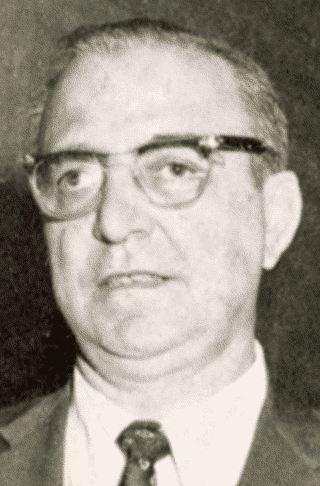
Russell Bufalino
Charles Bufalino was unpopular with the membership. According to Joseph, Bufalino was "only interested in making money" and wouldn't "accept the responsibilities of the 'Organization.'" The same thing eventually happened to Santo Volpe. Making money became Volpe's primary focus, and he lost interest in his underworld duties. His attitude change caused friction with the membership. As a result, Volpe was eased out as boss in 1942 and replaced by John Sciandra. [21]
Joseph LaTorre said Volpe "remained a powerful figure in the 'Organization' and his word was an influence upon the activities of the 'Organization.'" Volpe died in 1958. (It's interesting to note that all three early leaders eventually became disenchanted with the organization.)
John Sciandra, another Montedoro native, headed up the Organization for a few years. Samuel LaTorre described Sciandra as a "very cruel and vicious leader of the Mafia." [22] According to Joseph LaTorre, Russell Bufalino succeeded Sciandra as Pittston boss "sometime around the middle 1940s" after "[Bufalino] returned from Endicott, New York, where he was employed by Joe Barbara." [23] Sciandra allegedly appointed Bufalino as head of the organization because he wanted someone "he could trust and someone who would take orders." Sciandra died in 1949. [24] [25]
Steven LaTorre shelved
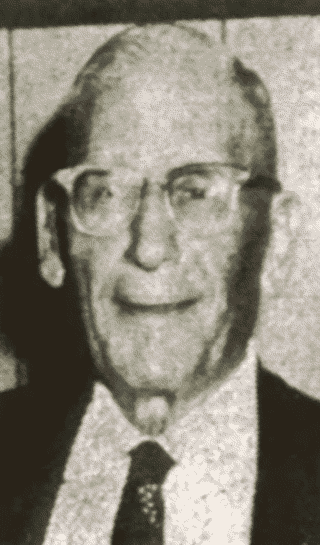
Steven Latorre
Four decades after founding the organization, former crime boss Steven LaTorre was "dropped" after years of tension between himself and the leadership. According to Joseph and Samuel LaTorre, the permanent break - which lasted over forty years- was caused by a series of disagreements that showed Steven LaTorre was out-of-step with the Organization.
- In 1929, the organization led by Santo Volpe and Charles Bufalino decided to hire killers to knock-off two union officials. They organized a collection to pay for the murder contract, but LaTorre refused to contribute his share. As a result, Volpe and Bufalino had to come up with more money. [26]
- LaTorre allegedly testified in court concerning a legal matter related to the United Mine Workers Union in Wilkes-Barre. [27]
- LaTorre allegedly lost most of his wealth in the 1929 stock market crash. To get back on his feet, LaTorre borrowed a large sum from Volpe and Bufalino that he refused to pay back. [28]
- The organization tried to enlist Joseph LaTorre to help break a union strike at a mine. However, Steven LaTorre refused to allow his son to participate in "cracking heads" which infuriated Russell Bufalino and John Sciandra. [29]
- Santo Volpe wanted to make Joseph LaTorre an LCN member in the early 1940s, but Steven LaTorre objected. [30]
- Steven LaTorre opened a smoke shop. His son-in-law, LCN member Angelo Parrino, worked in the business, but he never received an ownership stake. A meeting was held at the Sterling Hotel in Wilkes-Barre, attended by Santo Volpe, John Sciandra, Angelo Polizzi, Joseph Barbara, Steven and Joseph LaTorre. (Barbara was an LCN member from Binghamton, New York, closely aligned with the Pittston Crime Family.) Because Steven LaTorre was a member and subject to its rules, the organization asked LaTorre who gave him the authority to open his business and exclude Parrino. [31] LaTorre became angry at the group's questions and told them to "go to hell." [32]
Joseph LaTorre said the organization "used" Parrino to get at his father. The attempt to force Steven LaTorre to cut in Parrino for a share of the business may have been a provocation by Sciandra to provide him with additional leverage to drop LaTorre from the crime family. It also gave Sciandra control of LaTorre's interest in the Knox Coal Company, a mining concern that prospered using the organization's connections. After shelving Steven LaTorre, Sciandra stripped him of his ownership stake and allegedly used the proceeds to repay the money LaTorre owed to Bufalino and Volpe.
Moonshine manufacture in 1941
State and federal liquor agents in 1941 raided a property owned by Steven LaTorre's daughter, Mary, and her husband, Angelo Parrino. They found a 1,500-gallon alcohol still hidden in a garage. Joseph LaTorre and Angelo Parrino were convicted of conspiracy, and of the manufacture and possession of untaxed alcohol. They were sentenced to short prison terms. Mary Parrino and Samuel LaTorre were also charged but were found not guilty. [69]
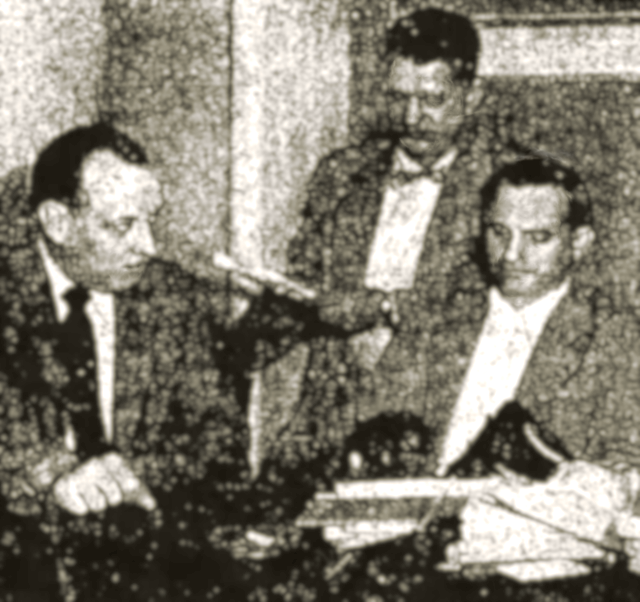
Parrino (right) being questioned.
The final break with the organization occurred sometime in the mid-1940s (in different debriefings, Joseph gave a range of dates between 1943 and 1950). Joseph Barbara "summoned" LaTorre to a meeting in Binghamton along with Russell Bufalino, and John and Angelo Parrino. Joseph said his father was "criticized for not cooperating with the Mafia and from then on he was not considered a member."
Joseph didn't use the term, but the organization "shelved" his father. Shelving was a Mafia discipline typically reserved for well-connected individuals who had fallen out of favor but didn't deserve to be killed or couldn't be killed for political reasons. Shelved mobsters could no longer present themselves as members or take advantage of the organization's resources. The punishment was usually temporary, and the organization traditionally reinstated shelved individuals at a later date.
Samuel LaTorre told agents that it was "amazing" the organization didn't kill his father. Samuel suspected his father was allowed to live because he was "respected and feared." Despite the falling-out, Steven LaTorre remained "highly regarded" by the older members, and they continued to visit him at his home.
After Samuel decided to become an informer in 1967, the FBI made a play for Steven LaTorre. He was assigned informant symbol code "PH 739-PC". There is no evidence Steven LaTorre ever cooperated. He had retired from criminal activity decades earlier, and the FBI had no leverage over him. According to the FBI, LaTorre "refused to discuss any matters" with them and was "afraid" to be seen with agents. [33]
Steven LaTorre remained estranged from the Pittston Crime Family for the remainder of his life. In a 1980 interview with the Times Leader, Joseph said, "My father hasn't talked to Russell Bufalino in 35 years. There's hard feelings between them." [34] Steven LaTorre died in 1984.
Separate or subgroup?
Over the years, the FBI collected conflicting information about the independence of the Pittston Crime Family and its leadership group. [35] Some sources, beginning with Joseph LaTorre, suggested Pittston may have been a subgroup of another crime family. But other sources, including Samuel LaTorre, advised that Pittston was an independent crime family. The difference in opinion between sources shows the intricacies of the Italian underworld were hard to pin down even between closely-associated individuals like brothers.
According to the FBI, the existence of the Pittston Crime Family had never been established independently through the "use of electronic surveillance." [36] LCN members in Pittston or any other city had never been secretly recorded by the FBI categorically referring to the organization as a separate crime group (to the FBI's satisfaction.) The lack of hard confirmation left the FBI unwilling, as late as 1969, "to go on record to say there is such a thing as the [Pittston Crime Family]."
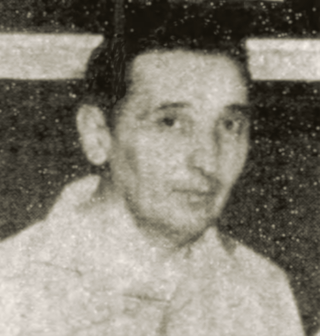
Joseph LaTorre
In 1955, Joseph told agents that Russell Bufalino controlled territory in the clustered northeastern Pennsylvania communities of Pittston, Scranton, Carbondale, Wilkes-Barre, and Hazleton. He said crime members in all these towns were "one family."
However, he said Bufalino answered to Joseph Barbara and said Barbara was Bufalino's "superior." [37] Barbara was a mob bigwig closely associated with Steve Magaddino and the Buffalo Crime Family. According to Joseph LaTorre, Barbara allegedly controlled Mafia activities in northern New York State and portions of Pennsylvania. He added that Barbara shared these supervisory duties with another unidentified mobster out of Philadelphia or Wilmington, Delaware. Joseph's statements to the FBI about Barbara's importance came two years before the 1957 Mafia convention at Apalachin.
In 1965, Joseph told agents that Bufalino was a "Mafia 'capo' and that his authority covers Mafia or organizations members located in Pittston, Scranton, Carbondale, Wilkes-Barre, and Hazleton, Pa. [LaTorre] said he considered this Mafia group 'one family' and the family was formally controlled by [John] Montana of Buffalo, N.Y., and at the present time it is possibly controlled by Steve Magaddino." [38]
In Joseph's regular debriefings over the years, federal agents pressed him repeatedly on the status of the Pittston crime group. The FBI's persistent questioning may have led him to ask his father for clarification.
By 1966, Joseph LaTorre advised that Bufalino was the "boss" of his own crime family. [39] He added that that LCN members in Hazleton, PA, a town just south of the Carbondale, Scranton, Pittston and Wilkes-Barre grouping, belonged to a "different LCN group." (He was likely referring to Philadelphia LCN members Vincenzo Amato and Joseph Scalleat who lived in the Hazleton area.)
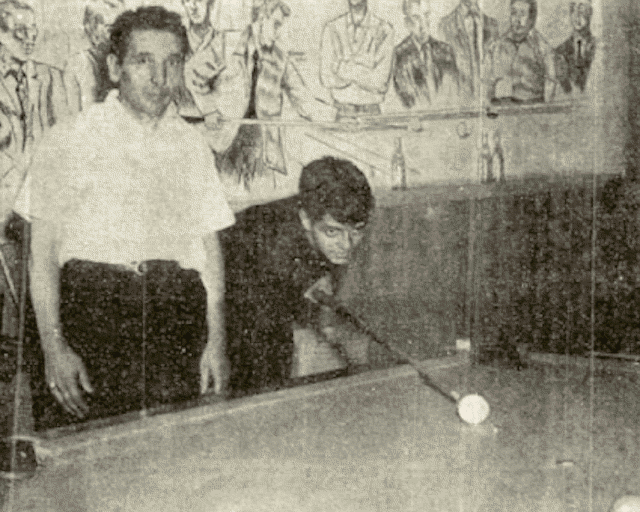
Joseph LaTorre (left) at LaTorre Recreation.
Samuel LaTorre had a different take. He told federal agents that Pittston Crime Family had always been a separate organization. He stated that Russell Bufalino was the "'boss' of his own 'Family' in the Upstate Pennsylvania area." [40] He identified the historical bosses of the Organization as Steven LaTorre, Santo Volpe, John Sciandra, and Russell Bufalino. [41] He did not mention any supervisory role for Joseph Barbara or the Buffalo Crime Family.
The FBI's other live sources gave conflicting information. For example, Philadelphia Crime Family member Harry Riccobene told the FBI that "he was of the opinion that there is not a separate family in the vicinity of Pittston, Pa., and felt that members there belonged to families in either New York or Philadelphia areas." [42] Rocco Scafidi, another LCN member-informant from Philadelphia, described Russell Bufalino as "almost like a boss." He assured the FBI that Bufalino was a lieutenant in the Lucchese Crime Family in New York, and before that, Bufalino had "belonged to the LCN family of Frank Costello." [43] It speaks to the organization's low profile that two second-generation mobsters - both their fathers were early LCN members - from the same state, provided such questionable information.
The FBI did have a well-placed source that could give firsthand information about Bufalino and his organization. By 1968, Gambino Crime Family member Carmine Lombardozzi had become one of the FBI's highest ranking informers. [44] A former caporegime familiar with LCN bosses across the country, Lombardozzi told agents that Bufalino was a personal friend and regular dining companion.
Lombardozzi told agents he first met Bufalino in 1957 at the mob meeting in Apalachin, New York. He had attended Apalachin as part of the Gambino Crime Family delegation led by Carlo Gambino and Paul Castellano. According to Lombardozzi, "Bufalino was introduced [to him] as the head of the family in Pittston, Pennsylvania." [45] He said Bufalino's crime family had fifty members scattered throughout the surrounding towns. He said Bufalino wasn't a Lucchese Crime Family member. [46]
At the time Lombardozzi first met Bufalino, Joseph Barbara was still alive. (He died of natural causes in 1959.) If Bufalino were the boss then, that would mean either Barbara was subordinate to Bufalino or Barbara was a member of another crime family altogether.
In another debriefing, however, Lombardozzi advised, "Joe Barbara, when living, was the head of his own 'Family' and was the boss. The 'Family' which Barbara headed is now known as the 'Bufalino Family.'" [47] The contradiction between Lombardozzi's two statements is left unexplained in the available FBI reports.
Joseph Barbara's specific relationship to the Pittston Crime Family remains debatable. Barbara was likely a caporegime in the Buffalo Crime Family and part of an influential nationwide network of LCN members born in Castellammare del Golfo, Sicily. Hosting the mob meeting at his estate unintentionally boosted his underworld standing more than he merited. (It came out that Buffalo Crime Family boss Steve Magaddino ordered Barbara to host the event.) [48]
Nonetheless, Barbara's documented interactions with the Pittston leadership, including the decision to shelve Steven LaTorre, suggest he had some role. He may have acted as an informal advisor or impartial mediator, given his historical ties to the city of Pittston, or he may have been Steve Magaddino's official liaison to the neighboring crime family. Informants never clearly spelled it out.
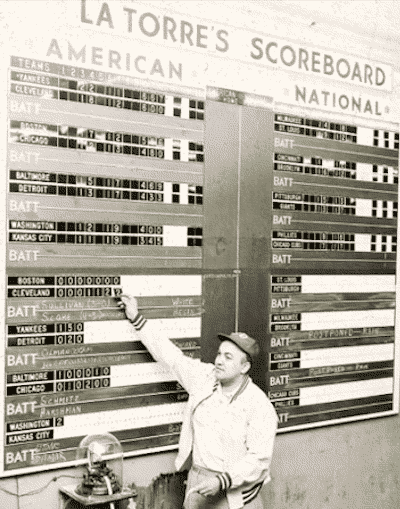
Scoreboard at LaTorre Recreation.
Crime Family breakdown
In 1955, Joseph said Russell Bufalino was the "supervisor" of John Parrino. (The LaTorre brothers rarely used the terminology found in other mob cities. For example, they never referred to "La Cosa Nostra"; instead, they used terms like "Mafia" or the "Organization." Instead of "caporegime" or "captain," they referred to "supervisor.") Parrino headed up a group of LCN members, including John Salvo, Samuel Cometa, Rosario Montanto, Angelo Polizzi, William and Angelo Medico, Louis Consagra, Joseph Contessa, Joseph Scalleat, and Angelo Sciandra. Joseph called Sciandra a "stooge." [49] Angelo Piazza, an old bootlegger, Leo Valenti, and John Buscemi, were associates. He said William and Angelo Medico became Mafia members around 1949. [50]
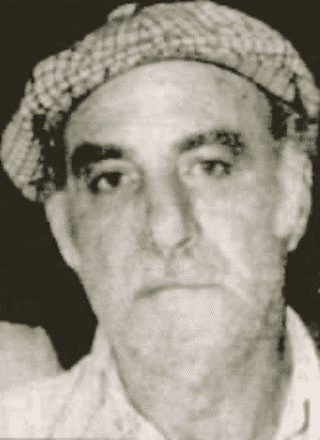
John Buscemi
According to Joseph, Dominic "Nick" Alaimo was probably a "member of the Mafia." He also suspected Modesto Loquasto, Bufalino's bodyguard, was too. In 1963, police arrested Loquasto after raiding a card game he operated. Joseph said Loquasto was "hurting" for money. [51]
In 1958, Joseph told agents that police raid at Apalachin happened "too soon" because "some of the more important members of the 'organization' had not yet arrived." [52]
Pittston-area members at Apalachin included Russell Bufalino, Angelo Sciandra, Dominic Alaimo, and James "Dave" Osticco. Joseph was surprised Sciandra and Osticco were there. He described Sciandra as a "baby," who hadn't yet "grown up" in the "organization." Joseph suspected he was only there because he was the son of former leader John Sciandra.
Besides providing the FBI with an abbreviated history of the crime family, the most useful contribution made by the LaTorre brothers was to identity LCN members in the Pittston-area. By the mid-1960s, other sources had provided the FBI with a good breakdown of LCN families in Pittsburgh and Philadelphia, but Pittston remained the only crime family in the state without a member-informant.
At the time, FBI director J. Edgar Hoover made identifying every LCN member a primary goal of federal law enforcement. Using Intel supplied by Joseph and Samuel LaTorre, however, posed a dilemma for the FBI since they were non-members. According to existing FBI guidelines, agents could rely on an admitted-member or a confidential listening device to verify an individual's membership. Otherwise, the FBI wouldn't officially confirm an individual's membership, regardless of how obvious it might seem. (The FBI's rule was similar to the La Cosa Nostra's own rule that two members unfamiliar to each other had to be officially introduced by a third member before they could acknowledge their underworld status to each other.)
Because of the lack of member-sources in Pittston made that impossible, federal agents received special dispensation from FBI headquarters to use Intel supplied by the LaTorre brothers to compile their membership list. [53]
Between them, the brothers identified thirty-nine former and current LCN members, including their father and brother-in-law. Joseph, the older brother, identified the majority likely because he was more familiar with his father's former associates. Without their help, the majority of Pittston Crime Family members would have remained unidentified. [54]
Samuel identified several LCN members outside of the Pittston-area, including new crime family members Carmine Ruggerio and Charles Pafume, in Providence, Rhode Island. [55]
Samuel said he knew Genovese Crime Family members Joseph and Pat Pagano. The Pagano brothers owned a meat and poultry wholesaling business that had connections to Pittston. When Samuel traveled to New York City to visit them, people would ask him about Russell Bufalino. He concluded Bufalino was a powerful individual in the Mafia. [56]
Samuel also identified Joseph Gurera from Kansas City. Gurera was the only LCN member he knew from Missouri. [57]Despite the proximity between Pittston and Philadelphia, the brothers were unable to identify any Philadelphia Crime family members except for Joseph Girgenti, Joseph Scalleat, and Vincenzo Amato. [58]
Joseph LaTorre's understanding of the Italian underworld was sometimes faulty. For example, in 1955, he told agents that Charles "Lucky" Luciano was the overall head of the Mafia.
Criminal Activity
Joseph provided law enforcement with more than just interesting historical information. Throughout the 1960s, he supplied the FBI with Intel to target active Pittston mobsters. For example, he told agents about a mob-connected craps game starting up in Edwardsville, Pennsylvania, a borough adjoining Kingston. [59]
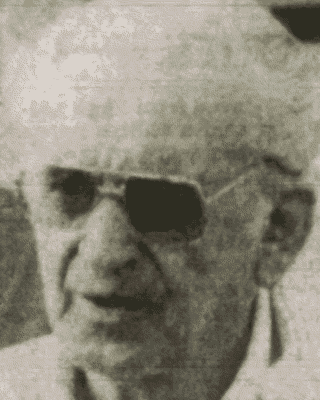
Casper Guimento
Russell Bufalino associates Casper "Cappy" Guimento and Modesto Loquasto were supposed to operate the game. According to Joseph, the local police chief was protecting the game. The Pennsylvania State Police subsequently intervened to shut down the game before it got started. The police chief explained that he thought the game was for locals, and he didn't realize "racketeers" were involved.
Joseph said Cappy Guimento owned the Tri-City Textile company in Pittston. Bufalino used the business as a front operation. Every Tuesday morning, Bufalino met bookies there and conducted criminal activities. Joseph advised that Guimento needed money and might sell the business. [60]
Joseph told agents that Bufalino and his underlings were attempting to muscle in on Pittston bookmakers and grab a "piece" of their business. According to Joseph, bookmakers feared the new arrangement would only bring more attention from law enforcement. [61]
Cappy Guimento tried to "chisel in" on a card game in Pittston, Joseph said. The rival card game operator resisted Guimento's attempt to muscle him out. Rather than let Guimento gain control of the game, he closed it down.
Another time, Guimento ordered rival bookmaker Ralph Rostock to stay out of Scranton. Guimento said the territory belonged to him. Guimento told Rostock he had to pay him to operate in the area, or he would "suffer the consequences." Joseph said Rostock closed his operation as a result.
Joseph advised agents about a dice game controlled by Bufalino associates operating in the showroom at the Ford car dealership in Taylor, Pa. [62]
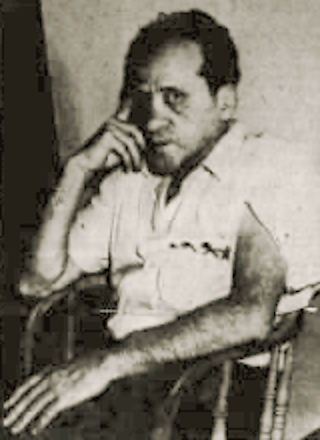
Schiowitz
In 1960, he told federal agents that Russell Bufalino's mistress had given him a Cadillac automobile. Bufalino had gotten into a physical confrontation with her ex-husband, and news of it landed on the local newspaper's front page. Joseph said Bufalino and his wife were now on the outs. He said, Bufalino treated his wife like a "housekeeper." [63]
He reported that Joseph Scalleat and Bufalino operated the largest horse race betting operation in northeastern Pennsylvania, headquartered in Scranton. [64] Joseph LaTorre advised federal agents that Bufalino intended to finance the bookmaking operation of two well-known gamblers named Joe Piccillo and Pete Morgan. [65]
Joseph told agents about a betting operation in Scranton run by George Lanzetta and his partner, former boxer Bernard Schiowitz. Known in the underworld as the "embalmer," Lanzetta was originally from Boston. Bookies gave a percentage to Lanzetta and Schiowitz for the privilege of betting with them. Every Monday, Schiowitz would meet with Bufalino and Cappy Guimento, to provide them with their cut. [66]
Joseph said Bufalino wanted to sell a parking lot he owned in Pittston for $7,000. [67]
Calls Crime Commission report 'a disservice'
In 1980, the Pennsylvania Crime Commission issued a report on the Pittston Crime Family containing confidential information secretly furnished by Joseph and Samuel LaTorre. Afterward, in an interview with the Times Leader, Joseph LaTorre complained, "That report is a disservice to young, professional Italian-Americans. There are plenty of good Italians. This isn't going to do any of them any good." [68]
Closing
Operating in a relatively obscure part of Pennsylvania, the Pittston Crime Family was small and clannish and difficult for federal law enforcement to infiltrate. Without the LaTorre brothers' secret cooperation, the FBI would have had a much harder time cracking the mystery of the Pittston Mafia.
Despite their lack of member status, they were the FBI's best live sources in northeastern Pennsylvania throughout the 1950s and 1960s and provided much of the early Intel on the Organization's history and membership.
Notes
Thank you to Eric Stonefelt and Thomas Hunt for their research assistance.
1 Thomas Hunt and Michael A. Tona, "Men of Montedoro," Informer, April 2011, 4-35. Hunt and Tona provide a detailed early history of the Pittston Crime Family.
2 FBI, La Cosa Nostra, Philadelphia Office, May 14, 1965, NARA Record No. 124-10204-10434. His relationship with the bureau became "fully realized" in 1965 when LaTorre began to provide "substantially" more information.
3 FBI, Steven Joseph LaTorre, Philadelphia Office, Aug. 22, 1966; FBI, "PH 872-PC", Philadelphia Office, May 17, 1967, NARA Record No. 124-10286-10493. Samuel LaTorre denied he was an LCN member, but his FBI handler thought he might be lying. Given his father's falling out with the Organization, it's unlikely he was ever a member. The brothers may have been influenced away from membership by both sides of their family. Their father, Steven LaTorre, was a founding member of the Pittston Crime Family later pushed out of the organization and deprived of his financial interests. Their mother, Rosina Lucchino LaTorre, was likely related to Salvatore "Sam Lockin" Lucchino - a Montedoro native and friend of Steven LaTorre - who served as a Secret Service informant against Mafia counterfeiters beginning in 1909, became a local police detective in Pittston and was murdered as he reached his home on the night of July 21, 1920.
4 His 1940 draft registration card indicated LaTorre lived at home with his parents and was unemployed. Listed at 5-foot-6 and 155 pounds, he had brown eyes, black hair, and a light brown complexion.
5 "The Nine Days of Oral Roberts," Sunday Dispatch, March 30, 1997. In 1956, LaTorre rented out the sleeping space above his business to participants in an Oral Roberts revival mission.
6 "Deciphering Clues to Baseball History," Citizens' Voice, April 19, 2015.
7 "7 Indicted by Grand Jury For Making Book in Horse Race Parlour in Pittston," Wilkes-Barre Record, Jan. 10, 1948. In 1948, police raided the business and found a betting parlor in the back of the store. They discovered a "horse race board in operation, and a crap table large enough to accommodate 30 people." Steven and Joseph LaTorre were charged as the "chief principals" in the bookmaking operation.
8 "Joseph LaTorre Pleads Guilty," Wilkes-Barre Times Leader, Jan. 24, 1959; "Grand Jury Indicts Glen Alden, Pennsupreme on Nuisance Charge," Wilkes-Barre Times Leader, April 20, 1962; "2 Plead Guilty to Bookmaking," Times-Tribune, Feb. 27, 1970; "LaTorre Fined $500 by Court as Bookmaker," Wilkes-Barre Times Leader, June 29, 1971; "3 Businesses And Home Are Police Targets," Wilkes-Barre Times-Leader March 4, 1971. In 1959 and 1962, Joseph LaTorre pleaded guilty to selling lottery tickets and bookmaking charges. In 1970, he was arrested for bookmaking. He was fined $500.00 and given six months jail term. Rather than going to jail, the judge sentenced LaTorre to immediate parole, and he was released. LaTorre's pool hall was raided again in 1971, and police confiscated gambling paraphernalia.
9 "To Wed in Late November," Wilkes-Barre Record, Nov. 6, 1940. LaTorre's military file indicates he enlisted in the Navy on April 18, 1945, and was discharged on Dec. 17, 1945.
10 "Trio Nabbed at Syracuse," Scrantonian Tribune, Dec. 21, 1952; "Sentenced for Syracuse Robbery," Press and Sun-Bulletin, March 5, 1953. While LaTorre waited outside in the getaway car, two accomplices tried to break into the store safe and steal $10,000. Police arrested the robbers inside the store after they fired three warning shots above their heads. LaTorre's two accomplices received lengthy prison sentences.
11 "LaTorre Still in Hospital," Tribune, July 6, 1954; "Guilty Pleas Entered by LaTorre, Parise in Counterfeiting Case," Tribune, July 9, 1954; "Counterfeiting Sentence Thurs.," Plain Speaker, Sept. 15, 1954.
12 "LaTorre Able to Stand Trial Doctor States," Pittston Gazette, July 7, 1954.
13 "Trial of Pair in Counterfeit Case Launched," Daily Item, July 7, 1954.
14 "Defendant Arrives Late by Ambulance," Williamsport Sun-Gazette, July 7, 1954.
15 FBI, "PH 872-PC", Philadelphia Office, May 17, 1967, NARA Record No. 124-10286-10493.
16 "LaTorre Fined $100 on Gambling Charge," Wilkes-Barre Times Leader, March 2, 1966; "Bookmaker Fined," Wilkes-Barre Times Leader, Jan 20, 1970; "Bookmaking Indictments," Wilkes-Barre Times Leader, August 17, 1972.
17 "Exeter man gets probation on illegal gambling charges," The Timers Leader, July 30, 1987. In 1987, LaTorre, at the age of 69, pleaded guilty to one count of conspiracy and three counts of bookmaking after a ten-month investigation into illegal gambling in Luzerne County. He was sentenced to two years probation and ordered to pay a fine of nearly $2,000. The penalty was to be used to offset the $20,000 cost of police wiretaps used in the investigation.
18 FBI, "PH 872-PC", Philadelphia Office, May 17, 1967, NARA Record No. 124-10286-10493.
19 FBI, La Cosa Nostra, Philadelphia Office, April 15, 1965, NARA Record No. 124-10210-10226.
20 FBI, U.S. VS. Bonanno, Philadelphia Office, June 26, 1959, NARA Record No. 124-10289-10078.
21 According to LaTorre, Volpe's "Mafia superior" helped to remove him as boss. The Mafia superior wasn't identified, but it may have been Montedoro-native John Montana, a powerful mobster closely associated with Buffalo Crime Family boss Steve Magaddino.
22 FBI, La Cosa Nostra, Philadelphia Office, December 24, 1968, NARA Record No. 124-10290-10457. John Sciandra was Steven LaTorre's nemesis. He seems to have made it a priority to collect monies owed by LaTorre to the Organization.
23 FBI, La Cosa Nostra, Philadelphia Office, April 15, 1965, NARA Record No. 124-10210-10226. Bufalino was godfather to Joseph Barbara's son.
24 Some unidentified sources suggested Bufalino only became boss in 1949 after Sciandra died. Bufalino may have become "acting boss" in the mid-1940s until he officially succeeded Sciandra on his death.
25 "John Sciandra, Knox Coal Official, Dies," Wilkes-Barre Times Leader, Sept. 12, 1949. An alternative history indicated Barbara became boss in 1942 after he murdered John Sciandra. However, that theory is wrong since Sciandra died of natural causes in 1949.
26 FBI, Steven Joseph LaTorre, Philadelphia Office, October 30, 1967. The murder victims were United Mine Workers union officials, Alex Campbell and Pete Reilly.
27 FBI, Steven Joseph LaTorre, Philadelphia Office, Aug. 22, 1966.
28 FBI, Steven Joseph LaTorre, Philadelphia Office, April 15, 1966.
29 FBI, Stefano Joseph LaTorre, Philadelphia Office, Aug. 13, 1965.
30 FBI, La Cosa Nostra, Philadelphia Office, May 14, 1965, NARA Record No. 124-10204-10434.
31 "Brothers Freed in Murder Probe," Bridgeport Telegram, March 15, 1955. In 1953, police arrested Angelo Parrino and his brother John in the beating death of a Connecticut nurse. The district attorney dismissed the charges in 1955.
32 FBI, Steven Joseph LaTorre, Philadelphia Office, October 30, 1967.
33 FBI, Steven Joseph LaTorre, Philadelphia Office, March 15, 1967.
34 "Crime report: Butera thinks it's 'full of …'," Times Leader, Sept. 12, 1980.
35 Celeste A. Morello, Applying the Sicilian Mafia's Rules and the FBI's Findings to Dismiss 'The Men of Montedoro' as Myth," 2017, Digital Library @ Villanova University. Mob historian Celeste A. Morello argued there was no Mafia family in northeastern Pennsylvania. She regarded it as a myth created by the media and law enforcement.
36 FBI, La Cosa Nostra, Philadelphia Office, April 1, 1969, NARA Record No. 124-10297-10107.
37 FBI, La Cosa Nostra, Philadelphia Office, May 14, 1965, NARA Record No. 124-10204-10434.
38 FBI, La Cosa Nostra, Philadelphia Office, May 14, 1965, NARA Record No. 124-10204-10434. Montana was a close associate of Buffalo Crime Family boss Steve Magaddino.
39 FBI, La Cosa Nostra, Philadelphia Office, September 11, 1967, NARA Record No. 124-10293-10351.
40 FBI, La Cosa Nostra, Philadelphia Office, December 24, 1968, NARA Record No. 124-10290-10457.
41 FBI, La Cosa Nostra, Philadelphia Office, December 24, 1968, NARA Record No. 124-10290-10457.
42 FBI, La Causa Nostra, Philadelphia Office, June 11, 1963, NARA Record No. 124-10200-10455; Edmond Valin, "Two inducted members provided the FBI with info on the Philly Mob," Rat Trap, December 2017. Harry Riccobene and Rocco Scafidi's cooperation is explored.
43 FBI, La Cosa Nostra, Philadelphia Office, September 11, 1967, NARA Record No. 124-10293-10351. Scafidi knew Bufalino by "reputation" only. His information came secondhand from LCN members Salvatore Scafidi and Alfredo Iezzi.
44 Edmond Valin, "Two Gambino Family informants had very different fates," Rat Trap, January 2018. Carmine Lombardozzi's cooperation is explored.
45 FBI, "NY 6436-C-TE", New York Office, October 29, 1968, NARA Record No. 124-10293-10244. Lombardozzi was "NY 6436".
46 Bufalino had business relationships with Lucchese Crime Family members in the garment industry some observers wrongly concluded he was a Lucchese member.
47 FBI, La Cosa Nostra, Philadelphia Office, April 1, 1969, NARA Record No. 124-10297-10107.
48 Thomas Hunt, "American Mafia Website-Scranton-Pittston Bosses, Guiseppe Barbara." Hunt argues Joseph Barbara belonged to the borgata of Buffalo Crime Family boss Steve Magaddino.
49 Joseph Scalleat was a member of the Philadelphia Crime Family. LaTorre likely meant his brother Albert Scalleat.
50 FBI, Dominic John Alaimo, Philadelphia Office, June 27, 1958, NARA Record No. 124-10347-10039; FBI, Angelo Joseph Sciandra, Philadelphia Office, June 25, 1958, NARA Record No. 124-10347-10025.
51 FBI, Russell A. Bufalino, Philadelphia Office, Aug. 26, 1963, NARA Record No. 124-10196-10441.
52 FBI, Angelo Joseph Sciandra, Philadelphia Office, June 25, 1958, NARA Record No. 124-10347-10025.
53 FBI, "PH 872-PC", Philadelphia Office, May 17, 1967, NARA Record No. 124-10286-10493.
54 FBI, La Cosa Nostra, Philadelphia Office, Sept. 11, 1967, NARA Record No. 124-10293-10351.
55 FBI, La Cosa Nostra, Boston Office, August 2, 1968, NARA Record No. 124-10226-10184.
56 FBI, La Cosa Nostra, Philadelphia Office, Dec. 24, 1968, NARA Record No. 124-10290-10457.
57 FBI, La Cosa Nostra, New York Office, Oct. 20, 1967, NARA Record No.124-10277-10308. LaTorre was the source "T-196."
58 FBI, La Cosa Nostra, Philadelphia Office, Sept. 11, 1967, NARA Record No. 124-10293-10351.
59 FBI, La Cosa Nostra, Philadelphia Office, April 15, 1965, NARA Record No. 124-10210-10226.
60 FBI, Casper Guimento, Philadelphia Office, Nov. 20, 1963, NARA Record No. 124-10347-10081.
61 FBI, La Cosa Nostra, Philadelphia Office, April 15, 1965, NARA Record No. 124-10210-10226.
62 FBI, Russell Alfred Bufalino, Philadelphia Office, March 10, 1961, NARA Record No. 124-10211-10059.
63 FBI, Russell Alfred Bufalino, Philadelphia Office, March 10, 1961, NARA Record No. 124-10211-10059.
64 FBI, Anthony Frank Guarnieri, Philadelphia Office, Sept. 23, 1960, NARA Record No. 124-10347-10021.
65 FBI, Russell Alfred Bufalino, Philadelphia Office, June 29, 1962, NARA Record No. 124-10196-10407.
66 FBI, Russell Alfred Bufalino, Philadelphia Office, June 29, 1962, NARA Record No. 124-10196-10407.
67 FBI, Russell A. Bufalino, Philadelphia Office, Sept. 28, 1962, NARA Record No. 124-10196-10418.
68 "Crime report: Butera thinks it's 'full of…'," Times Leader, Sept. 12, 1980.
69 "Defendants Post After Sill is Seized," Tribune, Jan. 28, 1941.
70 FBI, Gabriel Mannarino, Pittsburgh Office, Feb. 19, 1969, NARA Record No. 124-10277-10009; FBI, U.S. VS. Bonanno, Philadelphia Office, June 26, 1959, NARA Record No. 124-10289-10078. Joseph LaTorre also told the FBI about this meeting.
